MusicRadar Verdict
There’s no denying that the DT 990 PRO does have a very Beyer-like character, but that’s no bad thing, especially if exceptional spaciousness and detailed tonal depth is what you’re after. While we wouldn’t really recommend these for tracking or casual listening, we’d definitely consider them for mixing duties, which after all is their primary intended purpose. They’re not quite as flat as we’d like in terms of response, but they’ll get the job done reliably, as long as you have the means to drive them sufficiently and that you’re aware of that mild high-end boost and slight de-emphasis in the sub range.
Pros
- +
Solid build quality and replaceable components
- +
Great stereo reproduction
- +
Extremely comfortable
Cons
- -
Only available with 250Ω rating
- -
Non-folding design
- -
Needs an amp for best results
MusicRadar's got your back
Beyerdynamic DT 990 PRO review: What is it?
First appearing as far back as 1985, Beyerdynamic’s DT PRO range of studio headphones has become a popular fixture in studios across the world over the past four decades. Each designed to handle specific studio-based tasks, the current range includes the closed-back DT 770 PRO, marketed as a monitor headphone for tracking and programming, the semi-open DT 880 PRO and the open-back DT 990 PRO, the focus of this review, which is intended more for mixing and mastering duties.
Not to be confused with the recently-launched DT 900 PRO X, which is a more advanced, pricier open-back model with a new transducer design, the DT 990 PRO has the same physical architecture as the closed-back DT 770 PRO. Modular design with replaceable components has long been a priority for Beyer, a design philosophy that also holds true here with the 990 PRO sporting the same replaceable headband padding and ear pads as found on the 770 PRO. The two models also share a near identical internal spec, save for the fact that the 990 PRO is a few grams lighter due to the heavily-ventilated outer casing of the ear cups, the only real visible difference between the two.
In the box you'll find the headset itself, together with a 3m coiled cable permanently attached to the left earcup. The other end terminates in a 3.5mm stereo minijack connector that can be converted to a standard 6.3mm jack via an included screw-on adapter. Although these aren’t the most ‘chuck-in-a-bag-able’ headphones, there’s also a simple material drawstring pouch included to give the cans some measure of protection when out and about.
Beyerdynamic DT 990 PRO review: Performance & verdict
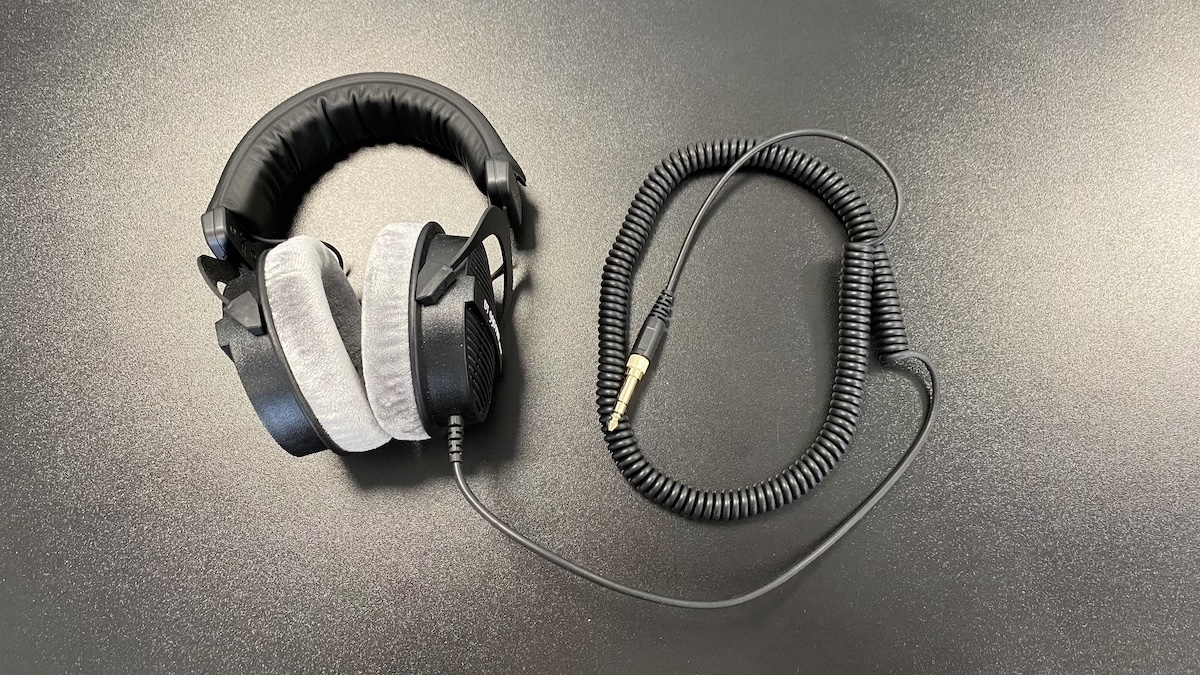
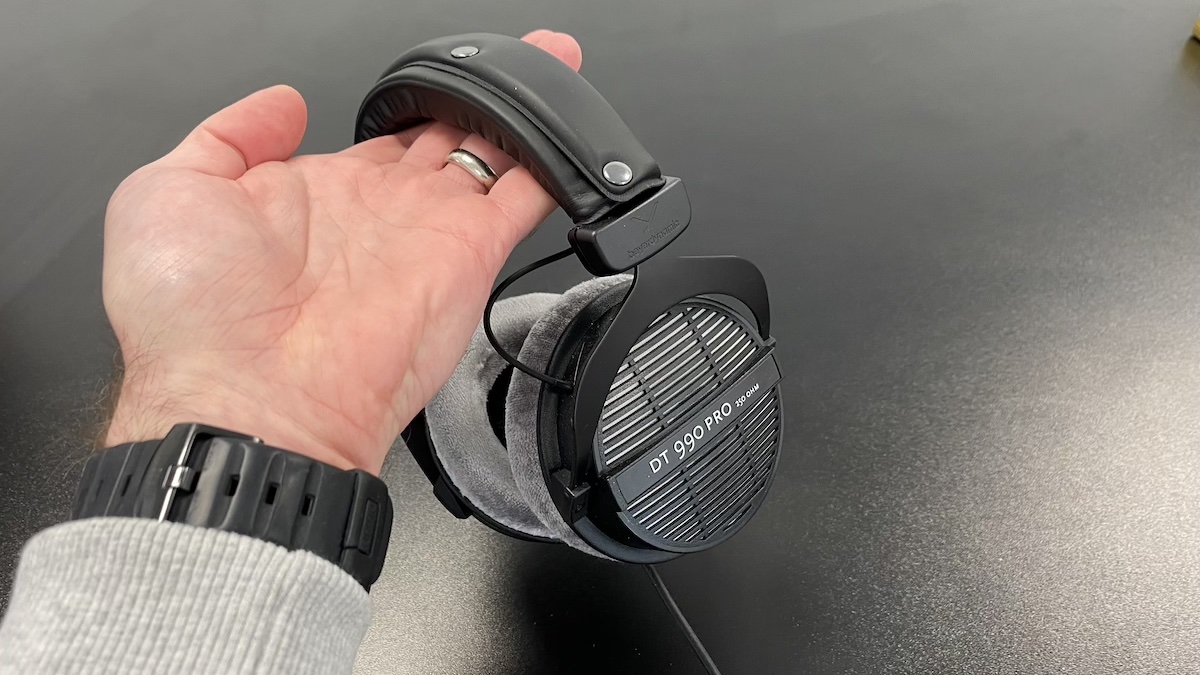
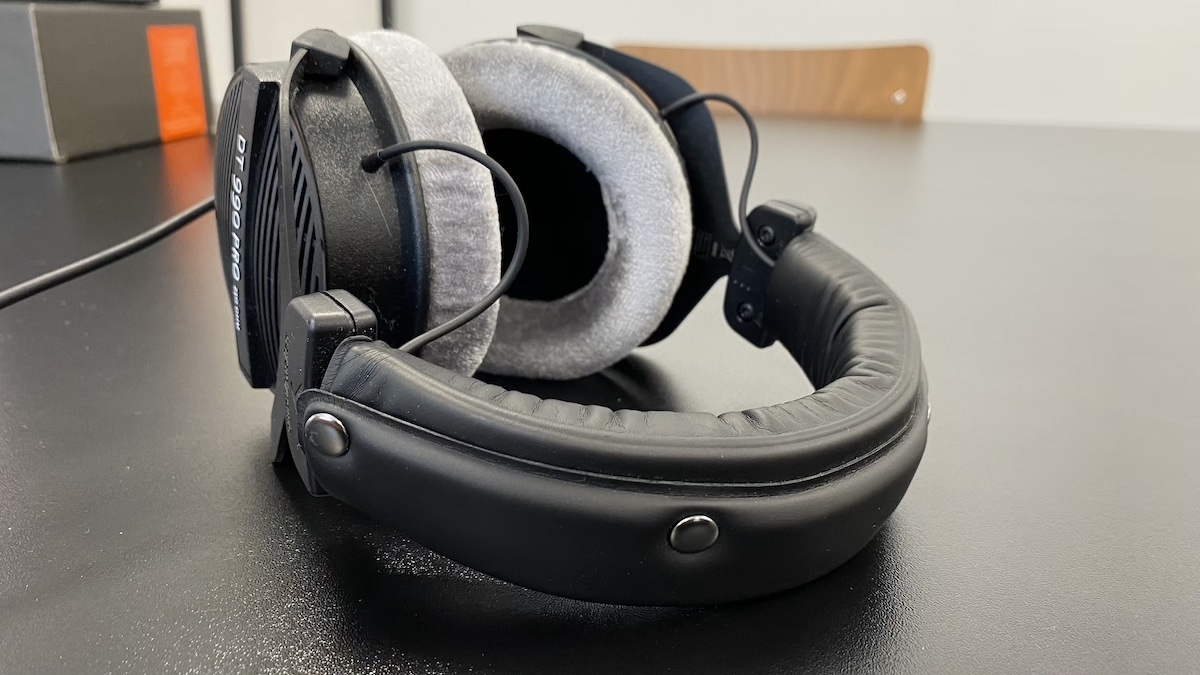
Exclusion zone
One of the main things that has made the DT PRO series instantly recognisable over the years is those famous padded velour ear cups. Every bit as comfortable as they look, these work in conjunction with the robust spring steel headband design, taking no time at all to mould to the sides of your head, cosseting your ears and ensuring that you’ll be able to wear these for extended periods without problems - one very important consideration for those in the market for a headphone you can use to mix on. The earcups don’t swivel or fold up for travel, but there is about 40 degrees of play in the vertical plane and roughly 20 degrees or so in the horizontal to allow them to adapt to different head shapes.
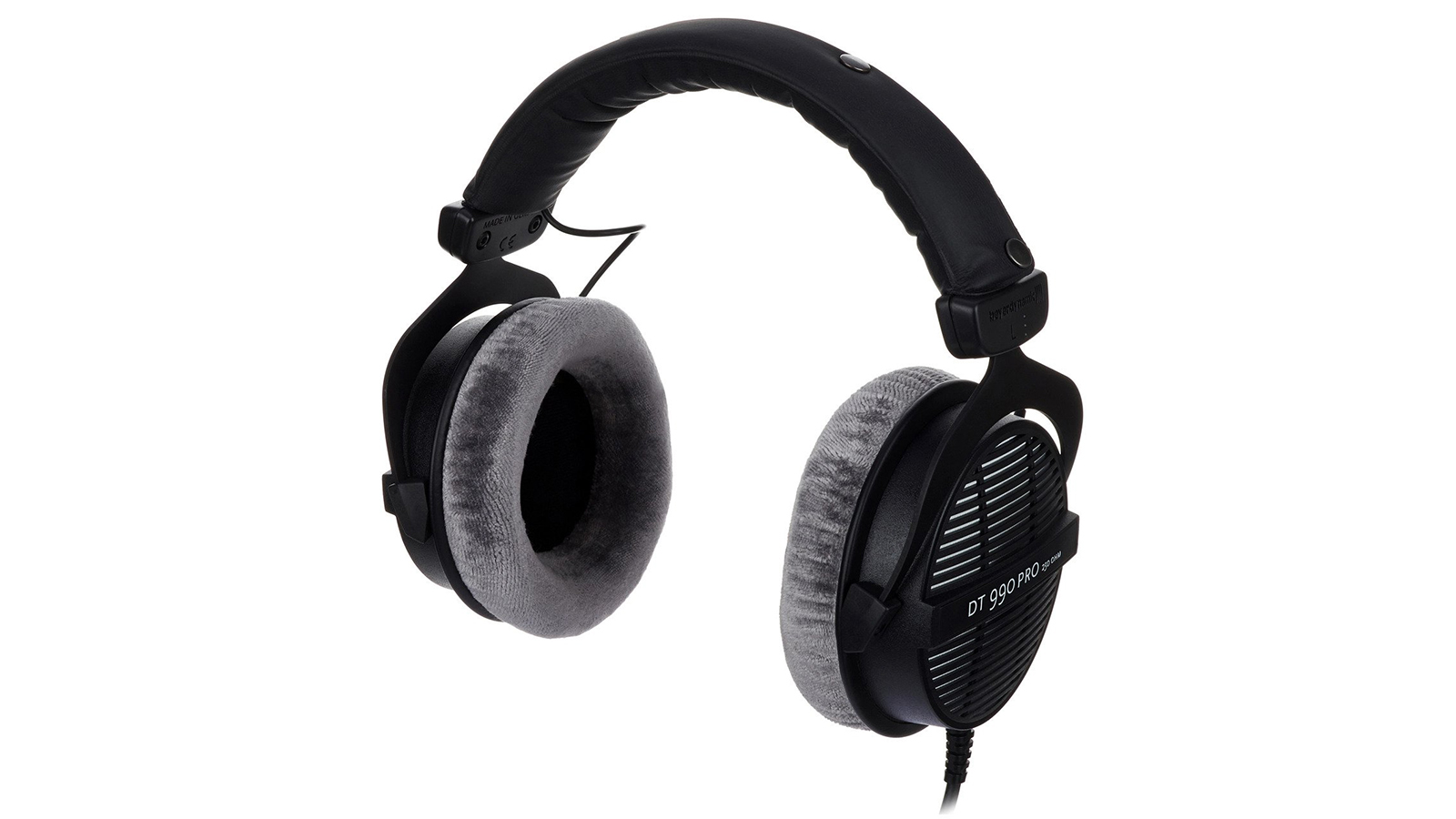
While the 770 PRO is designed mainly for programming, tracking and monitoring, the 990 PRO’s intended remit is referencing, mixing and mastering, evidenced by the fact that the 990 PRO’s are an open-back design. The propensity of all open-back headphones to leak sound makes them less suitable for recording with microphones, but the ability to allow air to pass through the back of the shell is intended to help deliver a more open, natural soundstage and wider stereo image when finalising your mixes.
Equally, this means that they’re not the ideal choice for commuting or casual listening in noisy environments - in our coffee-shop test, they struggled to mask the sound of crying babies and rowdy business meetings being held a couple of tables away. It would seem that the price you pay for an open, natural sound is an inherent lack of the kind of isolation and inclusiveness you get with the DT 770 PRO.
Impedance importance
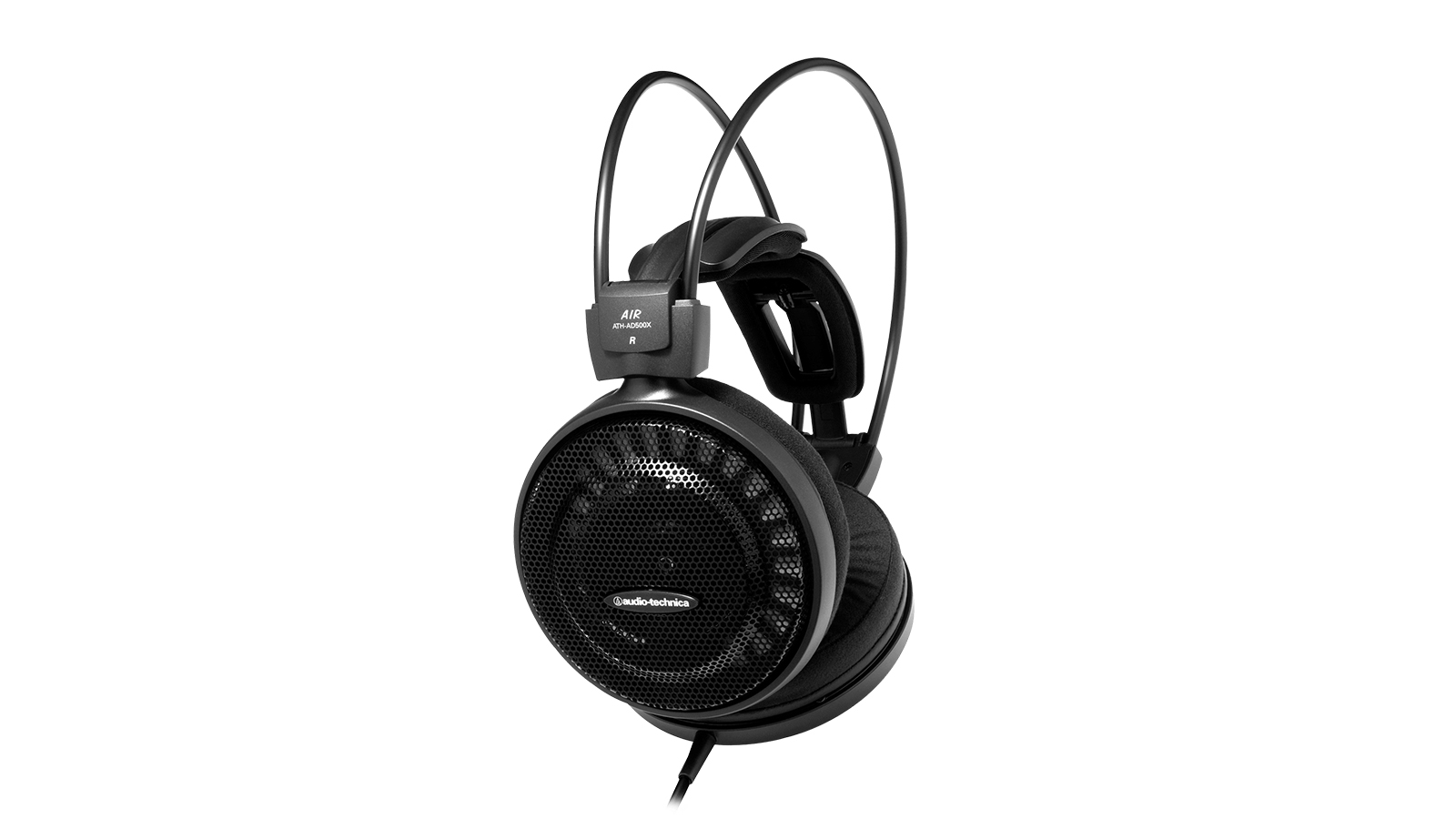
Audio-Technica ATH-AD500X
Great-sounding and comfortable open-back cans from Audio-Technica.
Beyerdynamic DT 880 PRO
Semi-open-back version of the DT 990 PRO, with better passive noise reduction.
Generally speaking, low-impedance headphones - rated below about 50Ω - are designed to play well with portable devices, as they can efficiently deliver satisfactory sound quality and volume from devices with a low output voltage. Unlike their closed-back cousins, the DT 990 PRO are only available with the one relatively high impedance rating of 250Ω. This means that they’re at their best when connected to a high-level signal from the headphone output of a studio headphone amp or audio interface.
In our tests, they did struggle when being driven by low-level signals from mobile phones and tablets, and even when hooked up to our MacBook Pro we needed to crank the volume right up to the max to avoid them sounding flat and underwhelming. In this scenario, although the overall sound was suitably open and wide, and everything was there, we found that unless you match them with a decent level signal to drive them properly, it just doesn’t sound forward enough. We can’t help thinking that an 80Ω version of these would have a much broader appeal and be happier being used with a wider range of devices.
On test in the studio
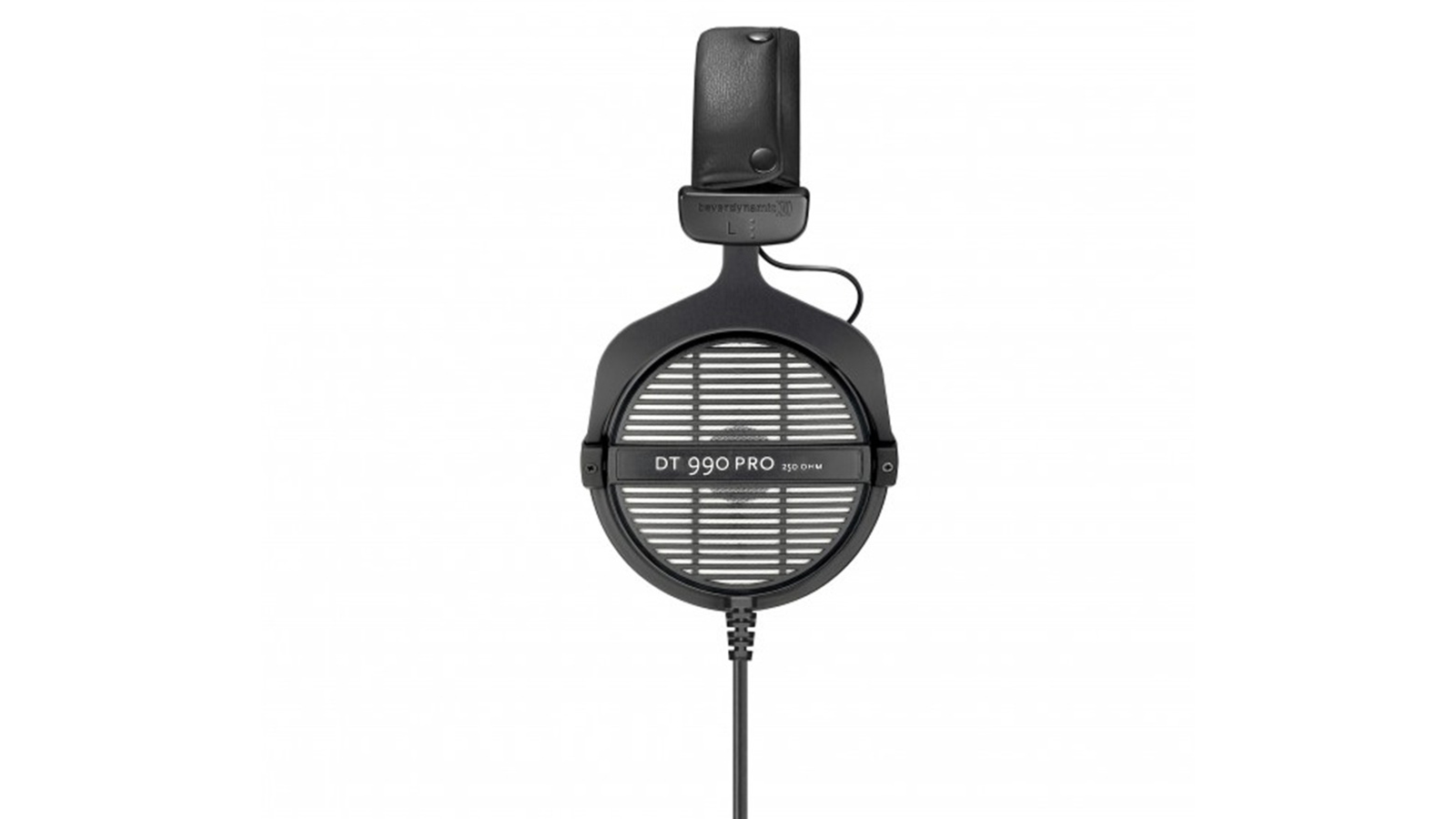
As a case in point, when we tried these connected directly to the sound module of an electronic drum kit, we couldn’t get them loud enough to mask the sounds of the sticks hitting the pads. However, when we plugged them into the headphone output of a Focusrite Scarlett audio interface, they suddenly came alive, delivering shovelfuls of punch and clarity. This highlights the importance of good impedance matching, where the rating of the headphones is in the same ballpark as the output impedance of whatever they’re connected to.
Beyer’s website states that these offer a balanced bass and treble, with an overall sound that’s analytical, transparent and very spatial. Drive them hard to give them the level they demand, and it turns out that this claim is largely true. Reports of a de-emphasis in the sub-bass range proved not to be troublesome in our case, with the bass suddenly much more defined without being in your face. The midrange was mostly clear and present, although the high mids still proved a little bit shouty and prone to emphasise over-sibilant vocals and make cymbals a bit more clicky-sounding than we’d like. Meanwhile, the stereo imaging was excellent, almost 3D at times, which at times confused us by making us think that we hadn’t actually got the cans on and the sound was coming from elsewhere.
Beyerdynamic DT 990 PRO review: Hands-on demos
Geekanoids
Detroit Tech
Nickyo
Beyerdynamic DT 990 PRO review: Specification
- Operating Principle: Open, dynamic transducer
- Frequency Response: 5Hz - 35kHz
- Impedance: 250Ω
- Weight: 250g (without cable)
- Cable: 3m coiled
- Ear pads: silver velour
- Contact: Beyerdynamic
Dave has been making music with computers since 1988 and his engineering, programming and keyboard-playing has featured on recordings by artists including George Michael, Kylie and Gary Barlow. A music technology writer since 2007, he’s Computer Music’s long-serving songwriting and music theory columnist, iCreate magazine’s resident Logic Pro expert and a regular contributor to MusicRadar and Attack Magazine. He also lectures on synthesis at Leeds Conservatoire of Music and is the author of Avid Pro Tools Basics.
“Excels at unique modulated timbres, atonal drones and microtonal sequences that reinvent themselves each time you dare to touch the synth”: Soma Laboratories Lyra-4 review
“I used everything I knew about music”: How Green Day exceeded expectations with their most ambitious song
YouTube just added AI tools that makes musicians, library music and video editors redundant











